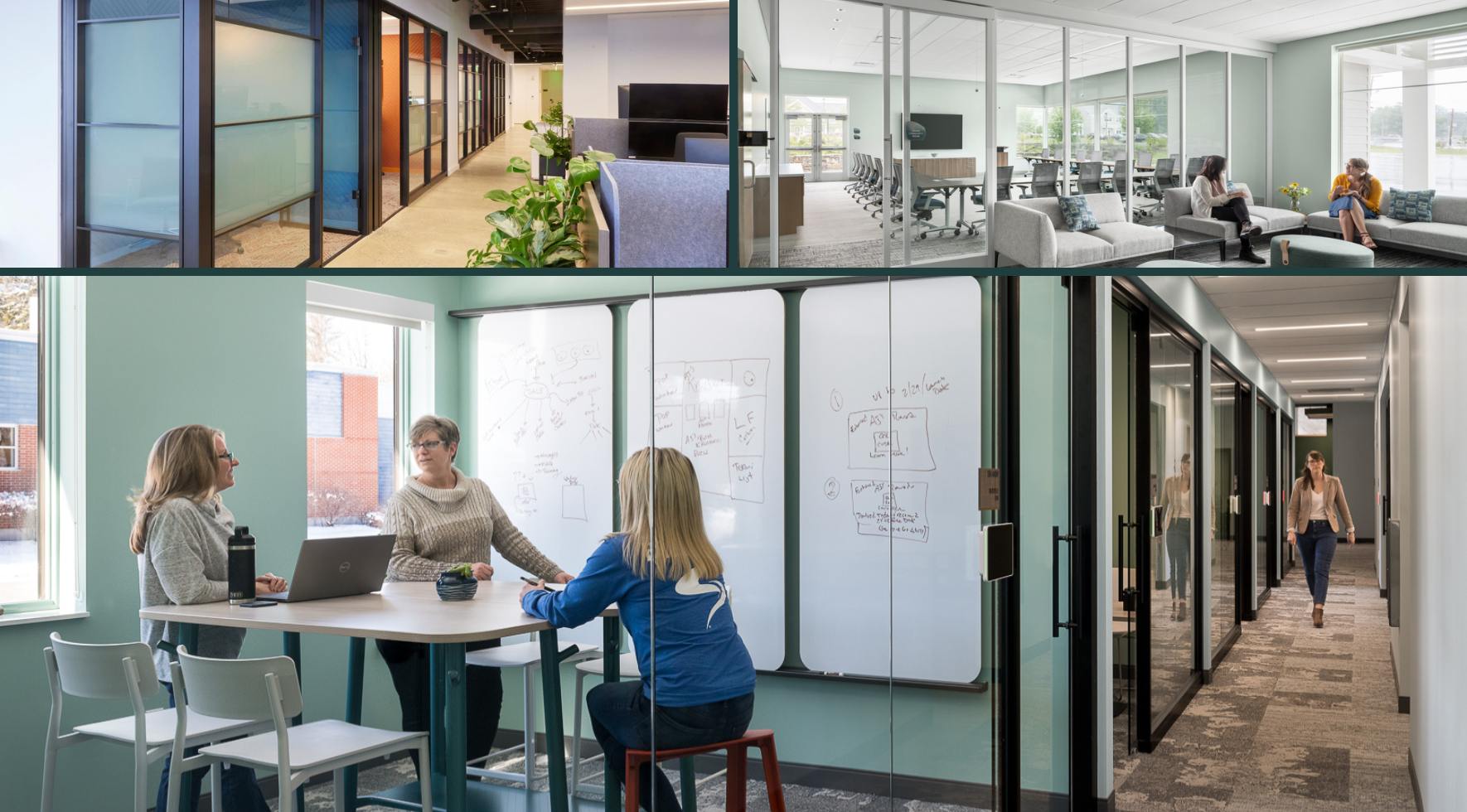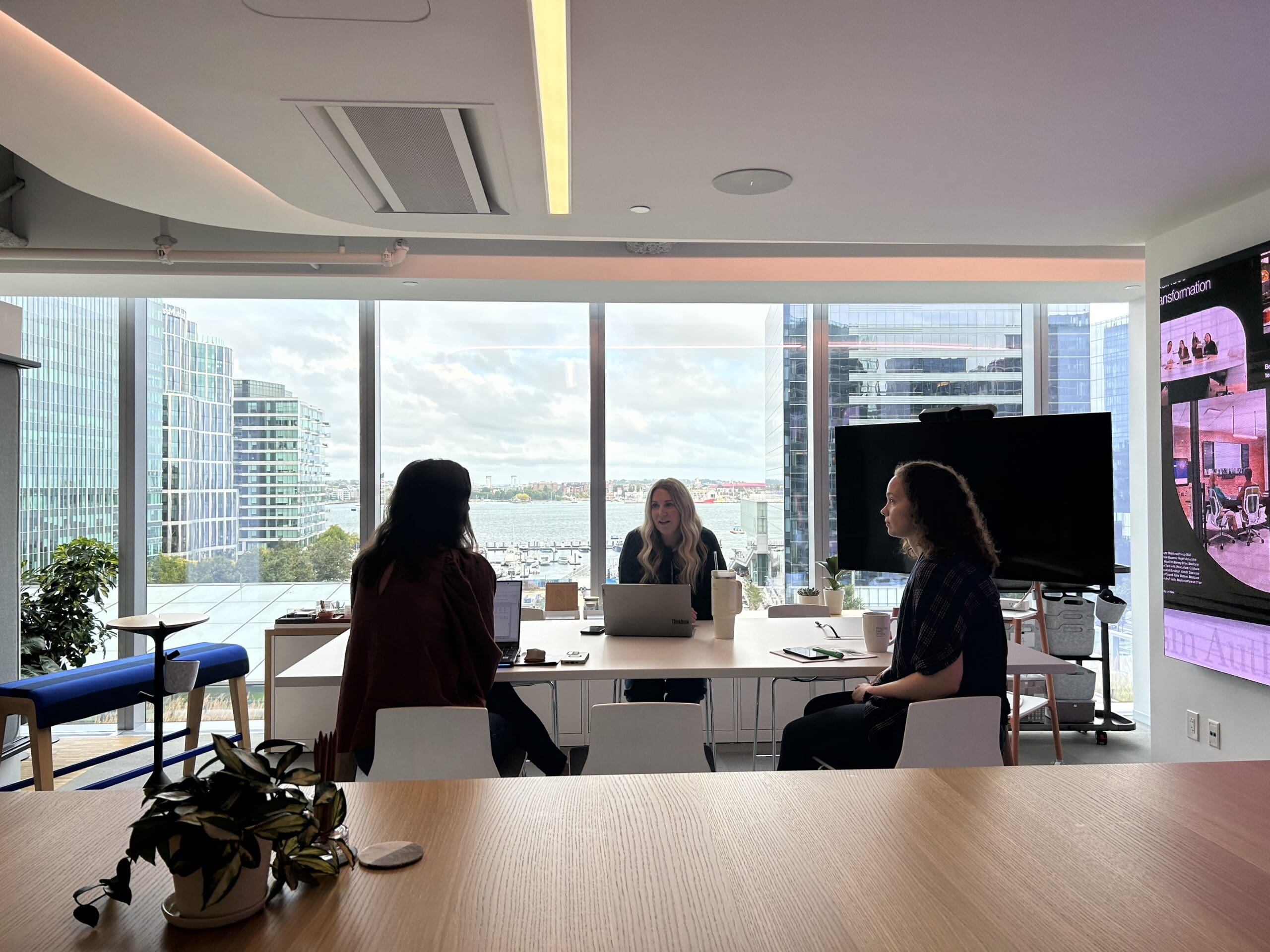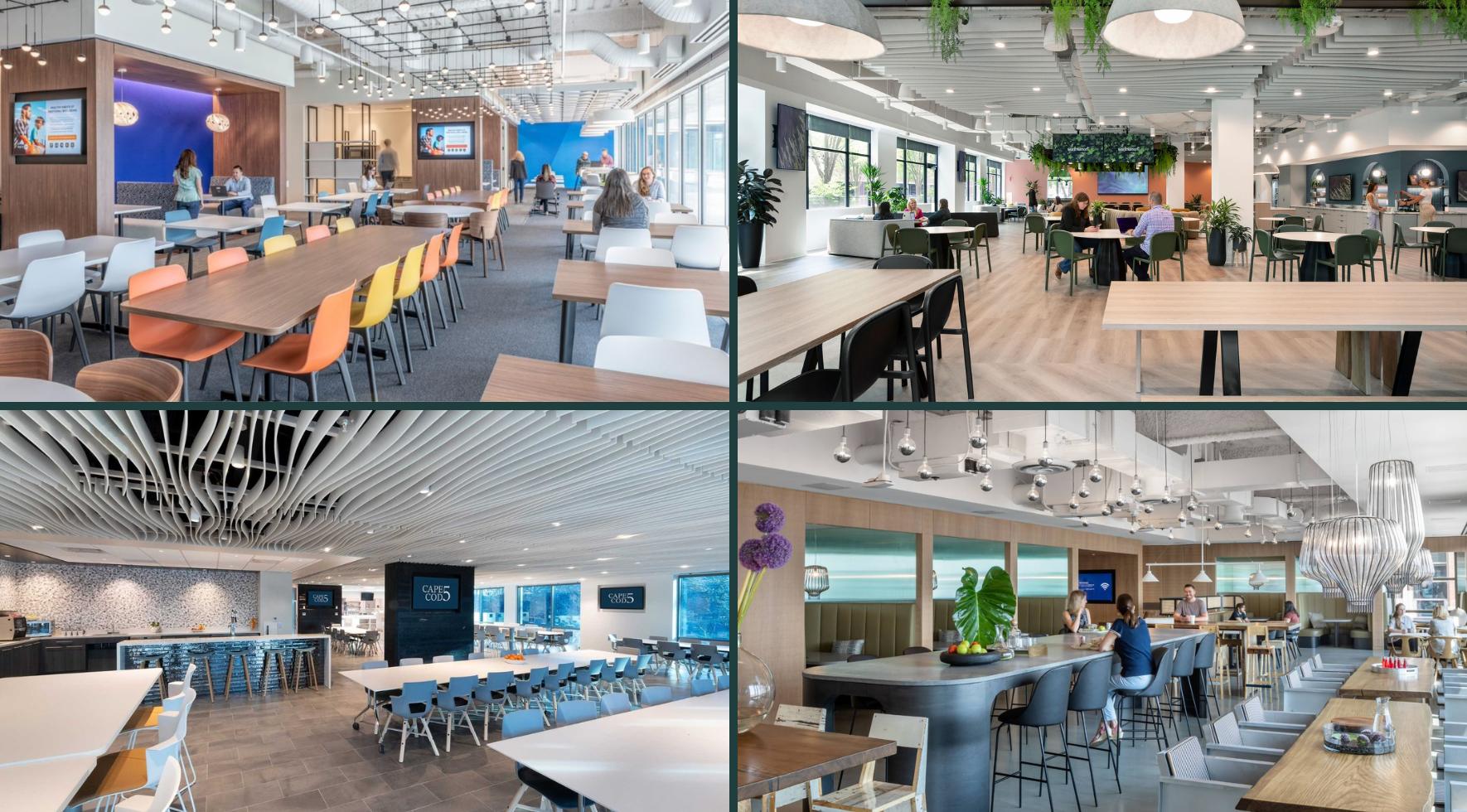Most K-12 and college education students are Generation Z, an overlooked demographic who are “merely surviving” or “flat-out struggling” according to Microsoft’s new research. Ensuring that Gen Z feels a sense of purpose and wellbeing is an urgent imperative in the shift to hybrid.
To create educational spaces that are productive, yet inspiring, Steelcase has conducted extensive Learn Better research. Building upon Steelcase’s design principles, we’re showcasing four different types of learning spaces that feature integrated classroom furniture and technology to enhance the learning experience.
STUDENT COMMONS
The Student Commons space outside classrooms provides a variety of settings where students can study alone or connect with classmates or instructors before or after class.
- Design Principle: Braiding digital and physical (enhancing human experience through technology)
- Description: Focus work can be conducted either at stool height desks or Brody Work Lounges, which offer additional visual privacy. Seated height benching provides ample surface for technology and manual work. For intimate small group collaboration, 2-4 person booths with built in 32” monitors provide easy content sharing.

STUDENT HUB
The Student Hub is the heart of a school and acts as a magnet where students gather to connect socially with each other or study – alone or in small groups. Access to food, beverage, gaming stations and school information create a dynamic comfortable setting where students can draw energy from one another.
- Design Principle: Me + We (equally supporting large groups, small groups, and individuals)
- Description: Energizing environment where students can engage in diverse learning activities. Individual and group study or exchanging ideas and information happen here. Specialized learning zones can help isolate noisier activities away from quieter activities. A casual, small group can gather around a 65” wall mounted display, seated on mobile buoys and writing on the circular paper tables. A secondary group can roll a 65” interactive monitor cart to join them for collaboration while interactive capabilities create a dynamic experience.

LEARNING COMMONS
The Learning Commons is a safe and comfortable environment that removes barriers between students and staff and supports multiple behaviors: social learning, individual and group study, small group meetings, connections between students and faculty, and impromptu teaching.
- Design Principle: Open + Enclosed (featuring more enclosed “me” and more open “we” spaces)
- Description: This space provides acoustic and visual privacy for individual work and remote learning. The zones throughout are optimized for different activities, from focused work within work pods to idea creation in the maker space, and collaboration with technology hubs. Individual work can be conducted at lounge seating or benching, both with partial visual privacy. Groups have both lounge and seated posture with whiteboards and 43” wall mounted displays. Teachers can display computer content to all students during instruction mode by utilizing a wall mounted high brightness projector. With the interactive capability, teachers and students can easily navigate computer applications, creating a more dynamic learning experience. Computer audio is distributed through high quality loudspeakers.

ACTIVE LEARNING CLASSROOMS
Versatile Active Learning Classrooms provide students options and tools to actively engage in the learning process.
- Design Principle: Fixed to Fluid (allowing for greater flexibility and mobility)
- Description: Highly mobile seating supports collaboration, transition, and movement for all the ways students learn. This multi-zoned classroom has ample seating with easily movable tables and chairs allowing teachers and students to reconfigure the room as needed for that day’s instruction. Teachers can connect their computer to a wall plate to display a 100” diagonal image onto a non-glare whiteboard via a wall mounted high brightness, high resolution projector. With the interactive capability, teachers and students can navigate computer applications at the board, creating a more dynamic learning experience. Computer audio is distributed through two wall mounted loudspeakers. The soft seating areas give students alternative areas for individual and group work while also changing postures for different activities.







